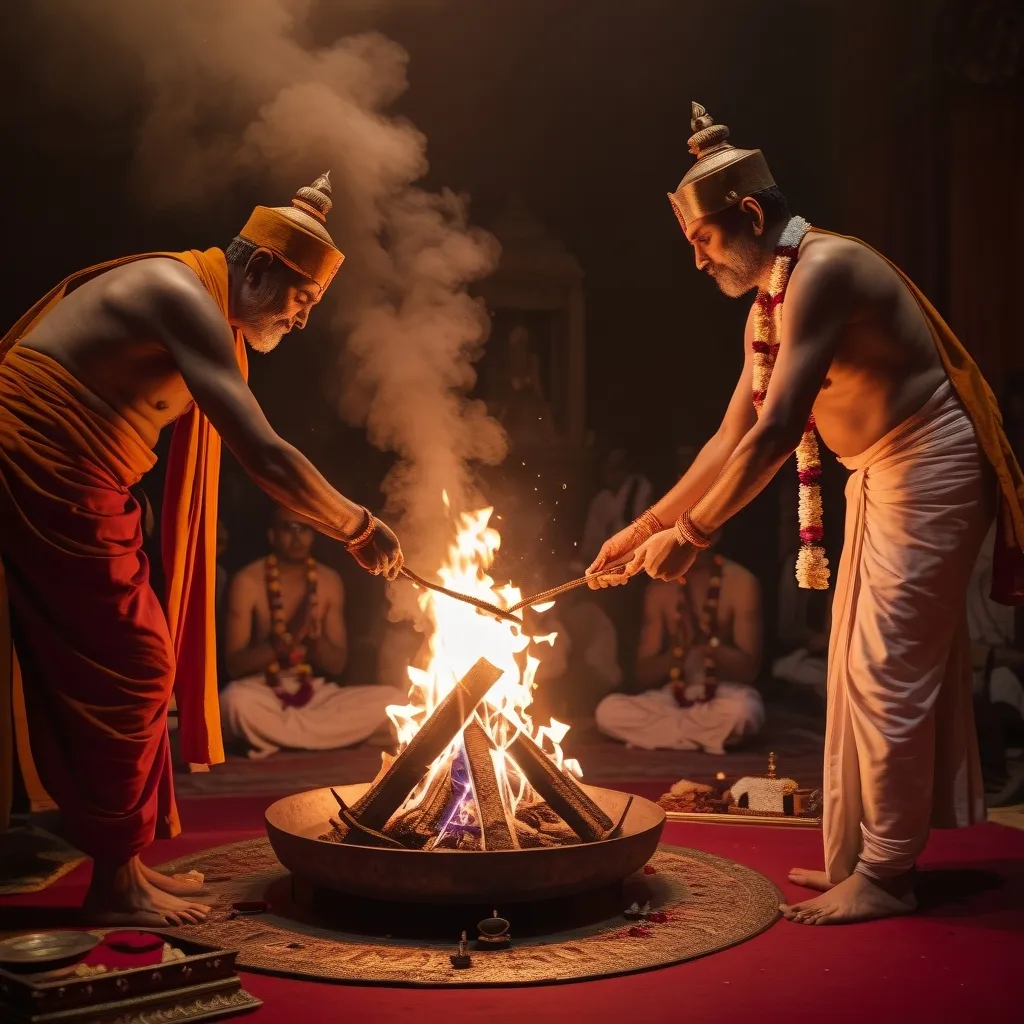If you ever stop for a moment and look closely at how families interact, you may notice patterns—tiny gestures, shared rituals, unspoken support—that feel as old as time. The Vedic tradition, some of the world’s oldest spiritual teachings, invites us to see family not merely as a set of relationships but as an active field where personal growth and universal values come alive. Rather than offering a set of rules, the Vedas suggest a way of being that infuses everyday routines, conversations, and even conflicts with higher purpose.
“Where there is love, there is life.” — Mahatma Gandhi
I often reflect on how the smallest habits can shape the heart of a household. Something as simple as sharing a meal at dawn, or pausing for a brief prayer together, is seen in these ancient texts not just as routine but as a conscious act that knits people closer. To me, this makes sense: when we stop to honor something bigger than ourselves, we invite gentleness and patience into the space between us. Have you ever noticed how a shared ritual can ease tension, or how a collective silence can be more unifying than words?
But what makes the Vedic approach intriguing is its nuanced balance between individual and collective needs. The household is not just a private space; it’s the seed of society’s future. Parents are guides but not gatekeepers—there’s a strong call to model values not through words alone but through visible acts of honesty, discipline, and kindness. I’m struck by the subtle wisdom here: children, the Vedas remind us, truly absorb what they see ten times more than what they hear. This challenges me—as a parent, teacher, or simply as a human among others—to ask: What am I silently teaching through my daily actions?
“The best way to find yourself is to lose yourself in the service of others.” — Gandhi
Service, or selfless action, is another key to harmonious relationships. In the Vedic view, even the humblest household tasks—cooking, cleaning, caring—can be done with a spirit of yagna, or offering. This redefines otherwise mundane labor. Imagine approaching a simple chore, not as a burden, but as a contribution to a shared peace. What would change if, instead of seeking validation or keeping score, we aimed to serve without expectation? It’s both liberating and humbling.
Of course, harmony does not mean the absence of conflict. In my own family and in every home I’ve observed, arguments surface: the Vedas acknowledge this reality with refreshing candor. What stands out is the recommended approach: rather than rushing to assign blame or force a resolution, there is encouragement to pause, listen for the deeper reasons behind a disagreement, and involve wise elders as mediators. Instead of winning an argument, the focus shifts to restoring respect and understanding.
“Peace is not absence of conflict, it is the ability to handle conflict by peaceful means.” — Ronald Reagan
Role flexibility is another aspect that I find both practical and profound in Vedic teachings. While each life stage comes with its responsibilities—the student learns, the householder provides, the elder advises, and the renunciant seeks wisdom—these are not rigid roles, but flowing stages. There is dignity in serving one’s family, just as there is honor in eventually letting go and passing the torch. This allows everyone to flourish, contributing in their own time, without clinging to control.
Reflect for a moment: How often do we lock ourselves into boxes of “provider,” “nurturer,” or “rebel”? What if family life allowed for fluidity, where every member has a chance to instruct, to support, to learn, and to step back? I’ve seen how giving someone a moment to lead—or gently encouraging them to receive—can heal lingering tension or push a relationship into new territory.
“We must be the change we wish to see in the world.” — Mahatma Gandhi
Marriage, in the Vedic vision, is particularly rich with meaning. The wedding ceremony, full of symbolic gestures, is not just a social contract but a conscious commitment to mutual support on the journey through ups and downs. The vows highlight support in hardship, not just sharing in joy. I’m often moved by the longevity of these promises. How many of us truly see our life partner as a companion in growth, rather than a finished project? What would shift if we approached our closest bonds with curiosity, ready to evolve together?
The Vedas stress the vital role of honoring ancestors and remembering those who paved our way. Family rituals to express gratitude for parents, grandparents, or even distant forebears aren’t just habit. They are ways of grounding our identity, seeing ourselves as part of a lineage. To me, this is more than nostalgia—it’s a living reminder that our choices ripple beyond our own lifetimes.
“Tradition is not the worship of ashes, but the preservation of fire.” — Gustav Mahler
I often pause and wonder: How does your family keep memories alive? Do you remember a story, an heirloom, or a proverb that connects you to those gone before? The Vedic path cherishes these links, urging us not to forget. Gratitude, here, is not only for what we have, but for the invisible effort and love that brought us to this moment.
One unexpected perspective from Vedic wisdom is the idea of emotional independence. Relationships offer support, but they shouldn’t become crutches. Each person, even within intimate bonds, is encouraged to preserve a sense of inner freedom. This goes against much of modern romantic thinking, but I’ve found it deeply liberating. When we release loved ones from the burden of meeting all our needs, each relationship brightens—no longer clouded by over-expectation or hidden resentment.
“Love is not about possession. Love is about appreciation.” — Osho
Parenting, too, has a unique shade in these teachings. Beyond shelter and guidance, children must be seen as independent individuals with their own spirits. The Vedic parent models values rather than imposing them, teaches discipline by living it, and encourages self-awareness before achievement. I find this focus on self-knowing as important as learning math or language. If a child grows up trusting their inner compass, the result is an adult who can adapt, forgive, and act with conviction.
Looking at the bigger picture, the Vedas remind us that a home’s strength lies in connection—between individuals, between generations, and between earthly life and a greater reality. When a family pays regular attention to inner and outer harmony—through prayer, reflection, or shared service—it becomes easier to withstand external changes. The world outside can be restless, but within the walls of such a home, there is a steady flame.
“Let there be spaces in your togetherness, and let the winds of the heavens dance between you.” — Khalil Gibran
What do you think makes a home truly harmonious? Is it shared values, rituals, laughter in the kitchen, or facing sorrow together? Or is it a spirit of respect, where differences are handled as learning opportunities instead of threats? Perhaps it’s all these—woven through countless small acts that are easy to overlook in the rush of daily life.
I find myself returning to the Vedic teaching that family is not an escape from the world, but one of its most important training grounds. In honoring each other, even on difficult days, we shape our own capacity for compassion and resilience. Each virtuous interaction at home strengthens the web of society; every lesson learned in patience or forgiveness ripples outward, quietly but powerfully influencing our broader community.
“We are not human beings having a spiritual experience; we are spiritual beings having a human experience.” — Pierre Teilhard de Chardin
If you’re curious about introducing some of these principles into your own household, start small—a moment of gratitude before a meal, a practice of pausing before reacting, or recalling an ancestor’s wisdom on a tough day. Watch how these seeds grow, sometimes almost invisibly, into deeper trust and affection. As I see it, there is nothing abstract or unattainable about the Vedic path to family harmony—it is carved out of ordinary moments, available to anyone, anytime they choose.
So I invite you: try asking yourself (and your loved ones) what traditions, rituals, or attitudes make your home a space of genuine connection. What would happen if you prioritized listening over speaking, or service over winning? The old texts don’t offer perfection, but they do offer a map—one that leads, quietly but surely, toward lasting joy at the heart of family life.






